
Problem
How to control the comfortable room temperature for pets
84% of owners say “I do not know the right temperature for pets"
Many pet owners don't know what the optimal temperature is for their pets to live comfortably, so they have trouble keeping the room temperature.
When the owners were asked, "Do you know the proper temperature for a pet to live indoors?" 84.3% responded, "I don't know.".
Surprisingly, there was no correlation with the years of keeping pets. Many people may be aware that "Pets are ok if people are comfortable" and "It can be kept outside, so it should be more comfortable inside.".
In addition, 50% of those who answered “I know the right temperature" answered "25ºC or lower is suitable temperature in summer," indicating a tendency to accept a slightly lower temperature.
Do you know the proper temperature for a pet to live indoors?
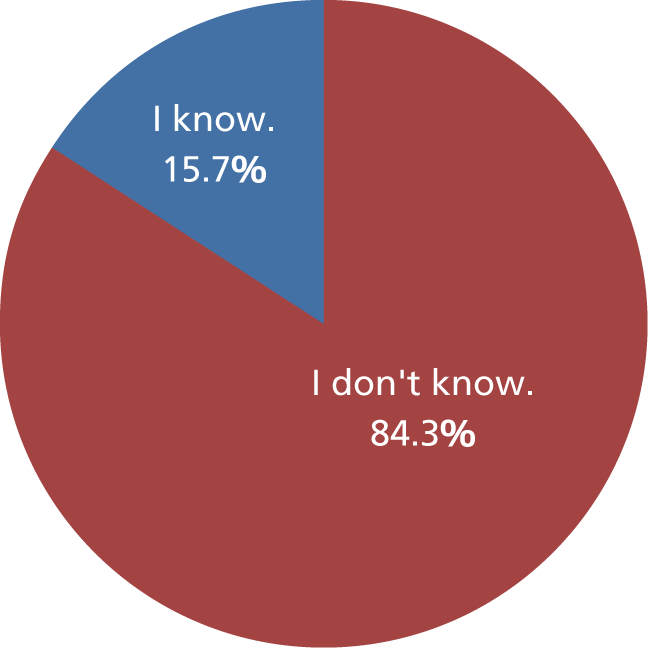
More than 80% said they did not know the appropriate temperature.
This indicates the lack of interest for indoor temperature.
Do you know the appropriate temperature for pets to live indoors in summer?
What temperature do you think is suitable for pets to live indoors in summer?
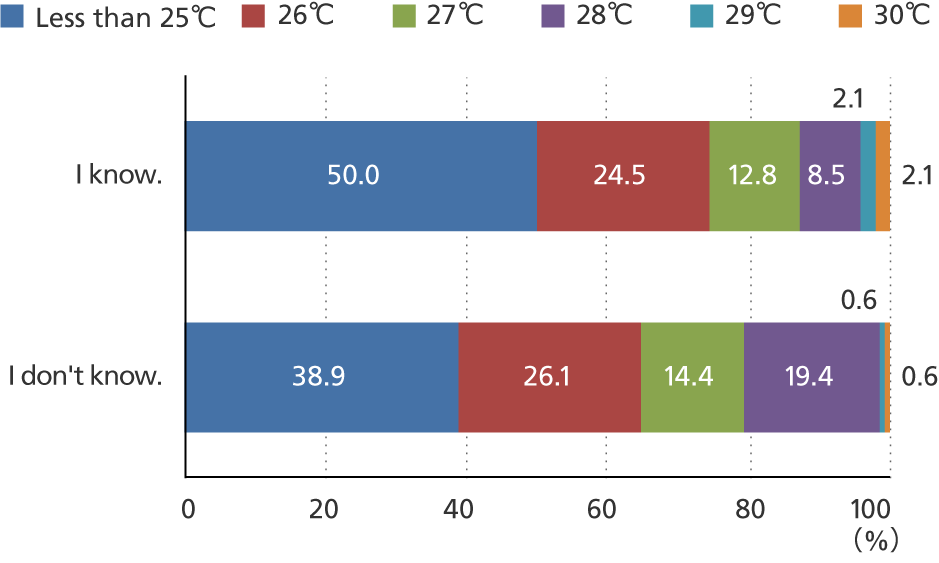
Pet Shedding
The most popular response was "care about pet hair"
When asked about their concerns about the indoor air quality in which they live with their pets, the No. 1 answer was “pet hair” (67.7%). “I have pet hair on the blanket”, “hair is thin and blows around", "lose hair on clothes", etc., the hair itself is easy to see visually, and there are many opportunities to be conscious of its existence, so it seems to be a concern.
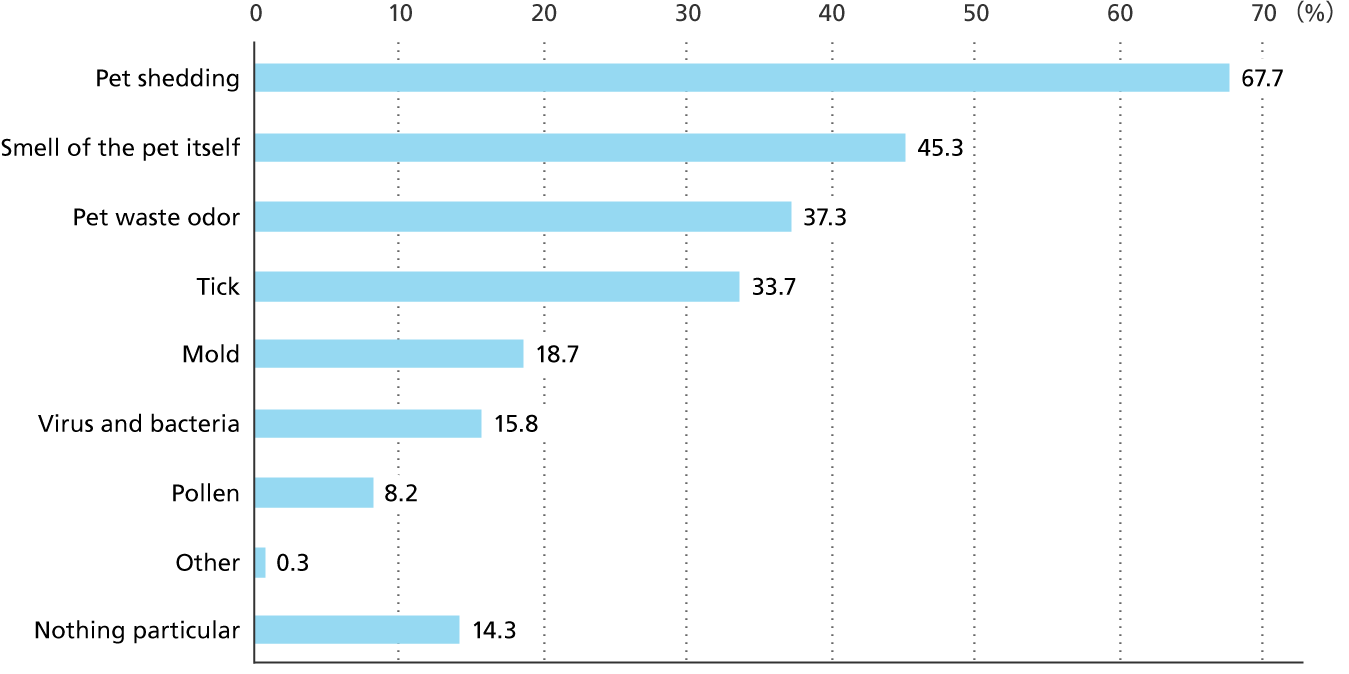
Smell of pets
There seem to be many people who are troubled by the smell of pets themselves or the smell of pet waste. Some owners use deodorants and air fresheners to make improvements, but their complaints are not resolved. Some owners have given up, saying, "I can't help it" or "do nothing in particular".
Viruses, molds, ticks and pollen
Many people are also interested in air issues related to pet health, such as viruses, molds, ticks, and pollen.
Solution
Measures to control room temperature
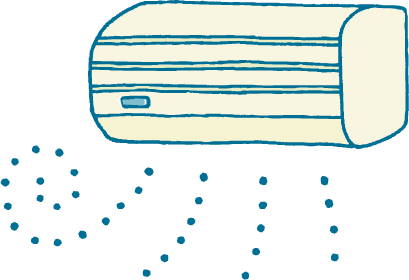
Advice from Daikin
In the middle of summer when the temperature is high, both temperature and humidity can be lowered by cooling with air conditioner. When the "Humidity" is high, such as during the rainy season, it is recommended to operate the thermostat in an air-conditioned room or a dehumidified room without becoming too cold.
If you use a dehumidifier, it is recommended for a room on the north side where the temperature gets lower. The room temperature of the room on the north side is lower than that of the room on the south side where it is easy to get sunlight. Because moisture tends to be uniform in all rooms, the lower the temperature in the north room, the less moisture can be in the air and the higher the relative humidity.
On the other hand, it is easy to dry in winter. For rooms where heating is used to increase the temperature by heating, the relative humidity becomes lower so let's use a humidified air cleaner. Also, Daikin's air conditioner "Ururusarara" is recommended because it can humidify without the need for water when heating.
Measures against pet shedding
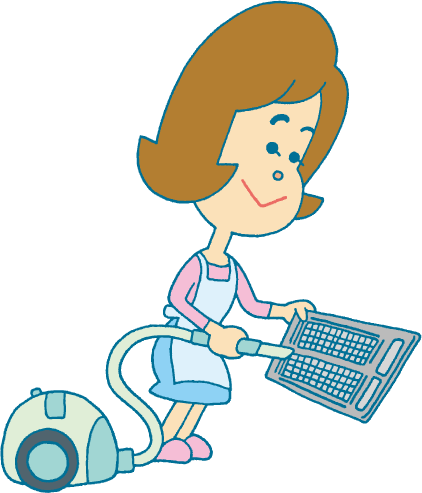
Advice from Daikin
If you are using an air conditioner, you can install an air purifier on the opposite side of the room where the air conditioner is installed to create airflow throughout the room and efficiently collect the accumulated hair.
If your pet's hair accumulates in the filter of the air cleaner, it will be inefficient to operate it. Aside from cleaning the floor with the vacuum cleaner, you should also clean the filter at least once every two weeks.
Pet odor control law
Advice from Daikin
The molecules of the odor adsorbed on the wall are about the same size as water vapor, so they are pushed out by the water vapor permeating the wall and released into the room on humid days. This was the cause of the bad smell of the rainy season.
Using this principle, if you dehumidify properly when the humidity is high, you can remove even the odor that has penetrated the wall. The rainy season is a chance to deodorize the walls. Depending on the weather, let's use ventilation, dehumidifiers, and air conditioner dehumidification to get rid of moisture together with odor.

Measures against viruses, molds, mites and pollen
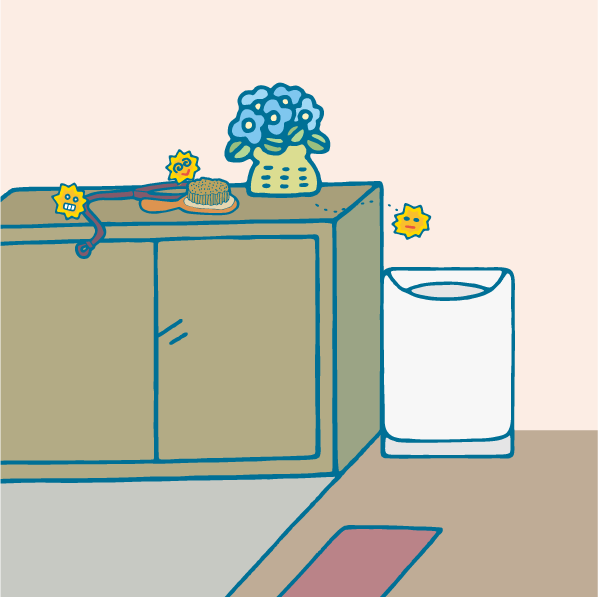
Advice from Daikin
There are many cases where animal care products such as reeds, brushes and jackets are placed around the entrance. Using this space, it is better to put an air cleaner. Try not to bring in viruses, bacteria, mold, mites and pollen from outside.
Reference
Growing attention to pets
According to data from the Ministry of Health, Labour and Welfare *1, the number of dogs registered with local governments across the country in 2013 was 6.75 million. Not all dogs are registered, but the number is about 3.5 times higher than in 1960.
*1, Ministry of Health, Labour and Welfare "ANNUAL TRANSITIONS IN THE NUMBER OF REGISTERED AND PREVENTED DOGS, ETC. (FY 1960 – FY 2013)"
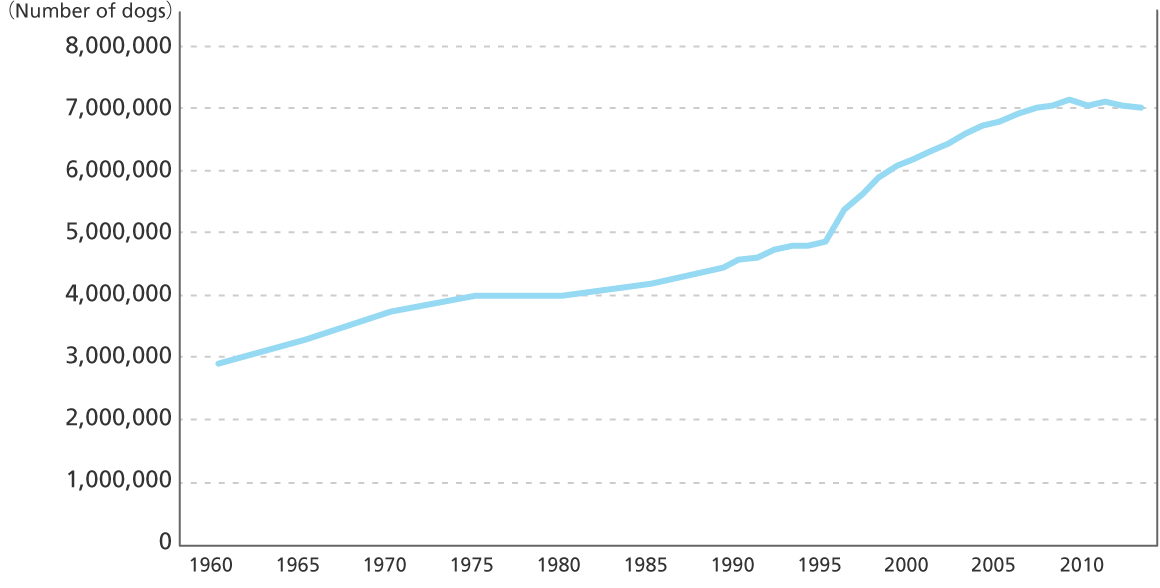
Source: Prepared from "ANNUAL TRANSITIONS IN THE NUMBER OF REGISTERED AND PREVENTED DOGS, ETC. (FY 1960 – FY 2013)" Ministry of Health, Labour and Welfare
* Since fiscal 1997, the figures have been calculated on an annual basis. In FY 2010, due to the impact of the Great East Japan Earthquake, municipalities other than Sendai in Miyagi Prefecture and municipalities under the jurisdiction of the Soso Health and Welfare Office in Fukushima Prefecture are not included for the period from January to March in Rikuzentakata City and Otsuchi Town, Iwate Prefecture.
According to the results of a survey conducted by Yano Research Institute, the total retail value of the pet-related market in fiscal 2013 was 1,428.8 billion yen.
The total market for pet-related products includes pet food, pet supplies, pet beauty parlors, pet care, pet insurance, pet hotels, and other services, and the market size is growing year by year. It is expected that the market will continue to expand in the future due to the aging of pets and the growing interest in the health maintenance and management of pets, as well as the growing demand for products and services related to them.
Source: Prepared from "Pet Business Survey Results 2014" Yano Research Institute, Inc.
* Retail value basis. Forecasts and forecasts are as of December 2014.
Trends and Forecasts of the Total Pet Market

86% of cats and 81% of dogs are kept indoors
According to the Pet Food Association's "Nationwide survey of dog and cat rearing in 2014" about 86% of cats are kept indoors (Indoor only, or indoor when not taking a walk or going out.), and about 81% of dogs are kept indoors.
In the past, many families kept dogs in outdoor huts, but in recent years, the rate of keeping dogs indoors has increased. The fact that people living in apartment houses are increasing in the city center means most pets can only be kept indoors are one of the most common reasons.
Penetration rate of pet ownership in the Tokyo metropolitan area
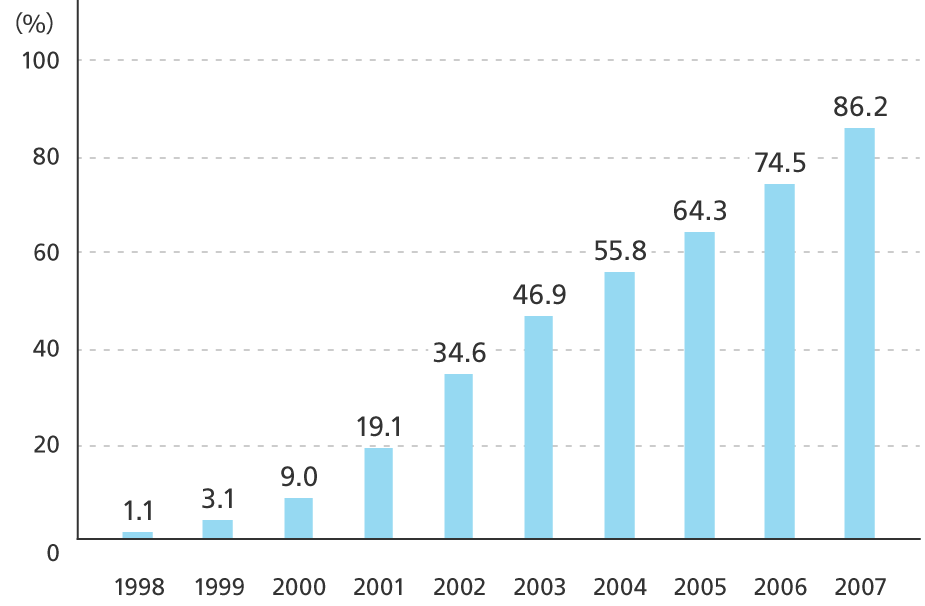
Source: 2007, Research Institute of Real Estate Economics
Pet-friendly condominiums surge in Japan
According to a survey by the Real Estate Economic Institute, "Pet-Friendly condominiums in the Tokyo metropolitan area" in 1998, 1.1% of newly built condominiums sold in the Tokyo metropolitan area allowed pets, but in 2007 the percentage had risen to 86.2%.
With the rapid increase in the number of apartments where pets are allowed, more and more families are living in the same space as their pets.
High interest in "air quality" and "smell"
When living with pets, how much awareness do residents have about "air environment"? In 2013, Daikin conducted a survey of pet owners about their "Concerns about indoor environment and air when people and pets live together".
The question was, "What are your concerns/concerns about living with your pet?" and answers were as follows.
- No.1 - Pet food and drink (27.3%)
- No.2 - Pet disease (19.2%)
- No.3 - The quality of the air in a room (shedding, cleanliness, etc.) (13.8%)
- No.4 - Pet waste (10.8%)
- No.5 - Pet odor (9.2%)
- No.6 - Pet diet/exercise (8.7%)
The interesting thing is that there is a high level of interest in the "air quality" and "smell" as well as issues related to pet health and daily life.
What are your concerns about living with your pet?
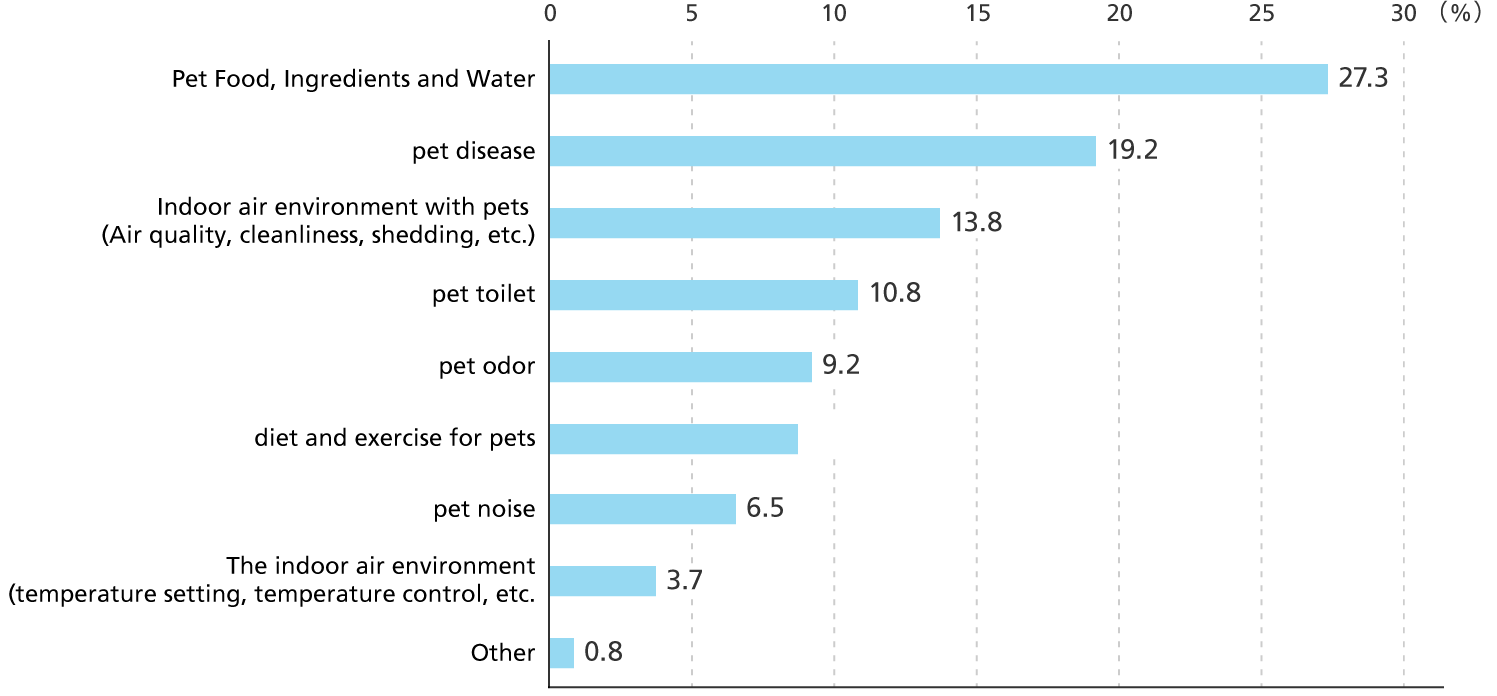
Pets and Heatstroke

Source: Anicom General Insurance "STOP Heatstroke Newspaper VOL1"
Temperature control is also important for heatstroke prevention.
Many people seem to worry about heatstroke of pets during summer. For dogs and cats, sweat glands, which regulate body temperature, are found only in limited areas, such as the pads of the nose and soles of the feet, so temperature control is important to prevent heatstroke.
Dog breeds prone to heatstroke
Breeds with short noses, such as the French Bulldog, Seeds, and Boston Terrier, are particularly vulnerable to heat because of their poor breathing efficiency. Those with thick hair, such as Shiba and Akita, also need to be careful about heat.
A dog unlikely to get heatstroke - Long snout

Long snout

Cool the air with smooth nasal breathing

Wide pharyngeal airways and efficient heat dissipation
A dog prone to heatstroke - Short snout

Short snout

The nostrils and nasal passages are narrow and nasal breathing is not efficient.

WideNarrowed pharyngeal airways reduce the efficiency of heat release
Source: "Iris Petto.com "Guide to preventing heatstroke in dogs


